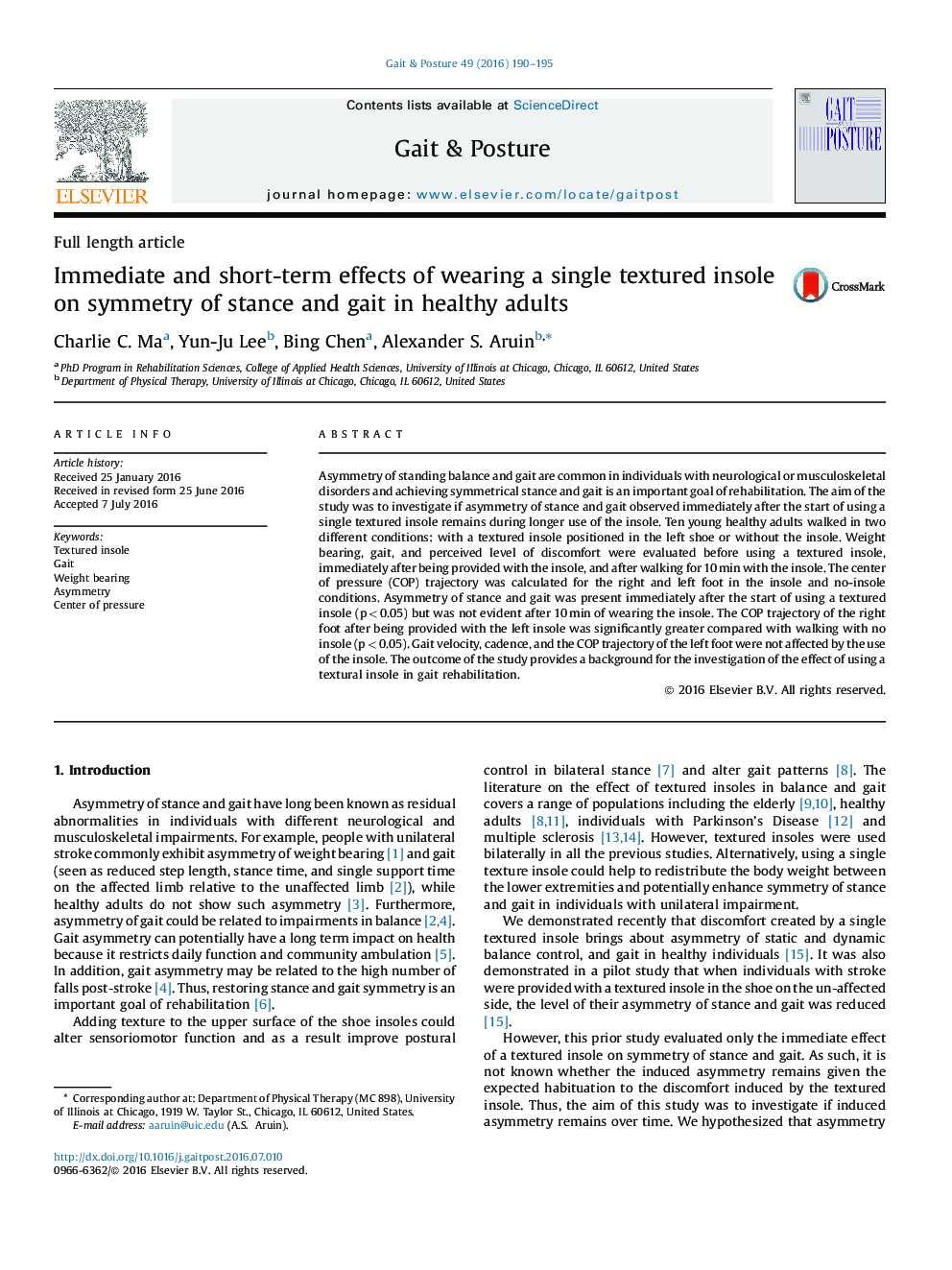| Article ID | Journal | Published Year | Pages | File Type |
|---|---|---|---|---|
| 6205436 | Gait & Posture | 2016 | 6 Pages |
â¢A single textured insole could cause stance and gait asymmetry in healthy individuals.â¢Wearing an insole was associated with mild discomfort.â¢Gait asymmetry was seen as larger COP trajectory in the foot opposite to the insole.
Asymmetry of standing balance and gait are common in individuals with neurological or musculoskeletal disorders and achieving symmetrical stance and gait is an important goal of rehabilitation. The aim of the study was to investigate if asymmetry of stance and gait observed immediately after the start of using a single textured insole remains during longer use of the insole. Ten young healthy adults walked in two different conditions: with a textured insole positioned in the left shoe or without the insole. Weight bearing, gait, and perceived level of discomfort were evaluated before using a textured insole, immediately after being provided with the insole, and after walking for 10 min with the insole. The center of pressure (COP) trajectory was calculated for the right and left foot in the insole and no-insole conditions. Asymmetry of stance and gait was present immediately after the start of using a textured insole (p < 0.05) but was not evident after 10 min of wearing the insole. The COP trajectory of the right foot after being provided with the left insole was significantly greater compared with walking with no insole (p < 0.05). Gait velocity, cadence, and the COP trajectory of the left foot were not affected by the use of the insole. The outcome of the study provides a background for the investigation of the effect of using a textural insole in gait rehabilitation.
